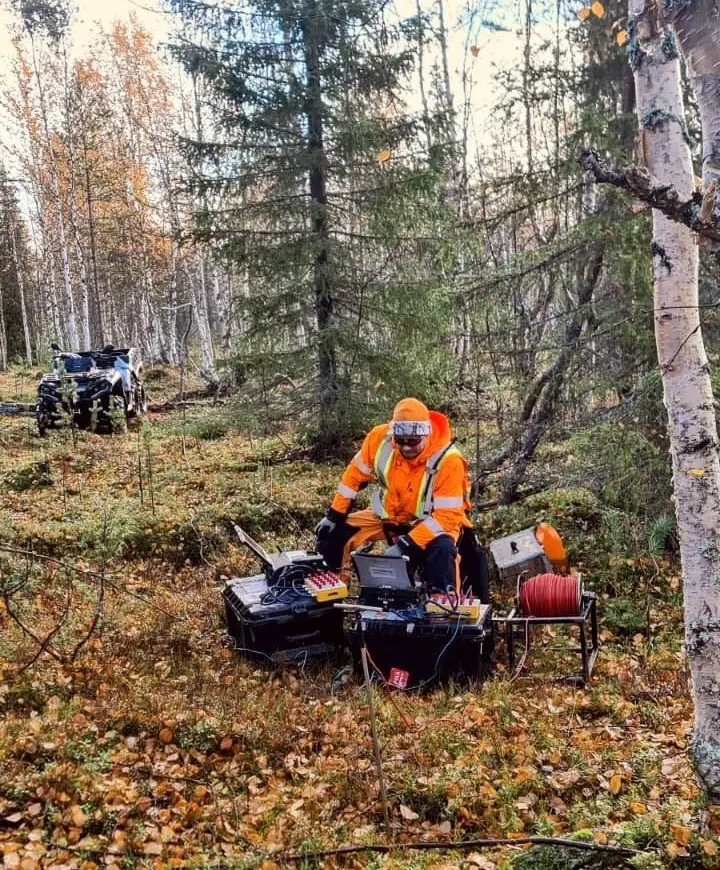Mise-A-La-Masse
Where
In the Mise-A-La-Masse measurement, a current is fed into a pair of electrodes, one of which is in a conductor (e.g. ore body or fracture zone) and the other far from the conductor. As a result, an electrical potential is formed in the vicinity of the target. This can be mapped either on the ground or from a borehole by measuring the potential difference between the electrodes.
Advantages
Mise-A-La-Masse measurements can be used to determine the size and geometry of an ore body, or e.g. if two ore bodies are in electrical contact. The method can also be used to map the continuity of fracture zones or e.g. graphite layers, which can lead to high risk of stope failure.
Data can be quickly processed to give an idea of the geometry or the target and the relationship between targets. Mise-A-La-Masse is most effective when used in tandem with other geophysical methods.
Surveys
Mise-A-La-Masse is based on the measurement of electrical potential field and doesn’t have a penetration depth that would be dependent on e.g. length of the measurement line. Instead penetration depends on the electrical properties of the target and its surroundings, input current, electrical contacts between electrode and target etc.
Method is also suitable for deep boreholes
Equipment
We use primarily ABEM’s Terrameter for the measurement. If necessary, you can ask us about alternative equipment. We have excellent connections to equipment rental companies and a wide network of partners.
Data
The client always get’s quality controlled raw data from the measurements. In addition, we provide data processing, interpretation and reporting as agreed.
Reporting and induction to the data are done to the level agreed with the client.

